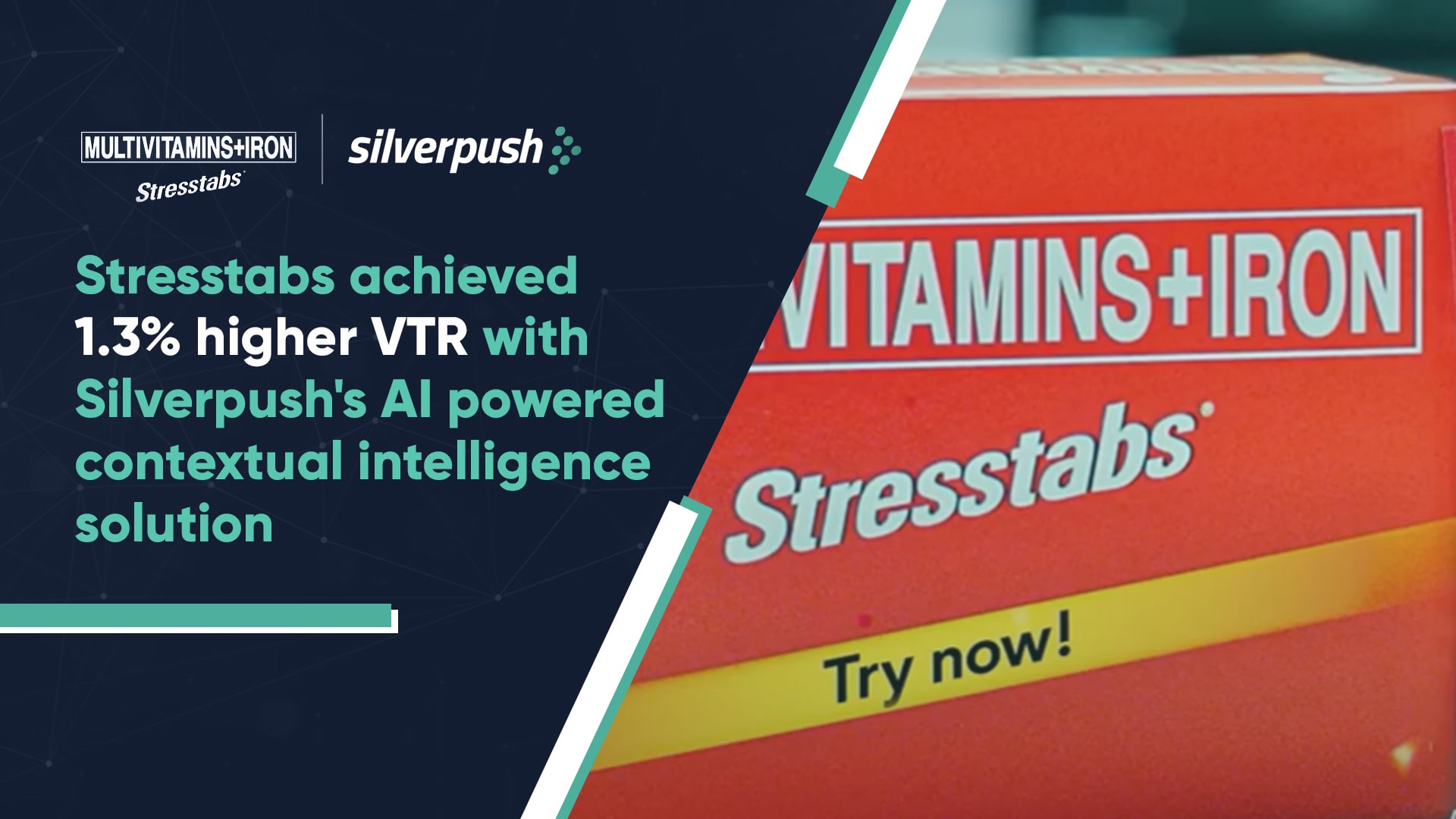Contextual Isn’t New, but Advancements Will Solve Marketers’ Headaches | 13 Dec, 2023
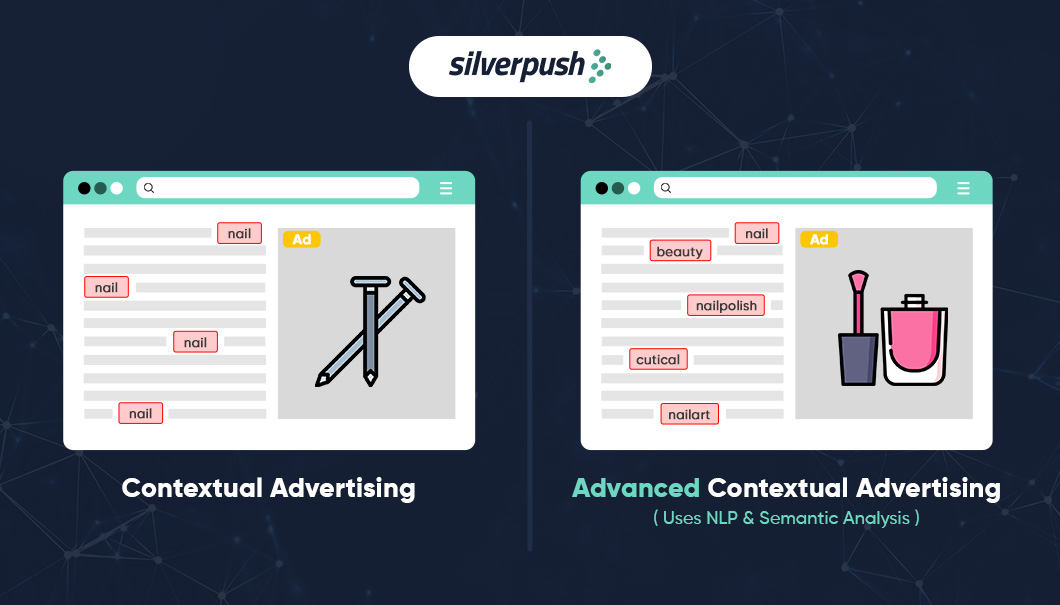
Contextual advertising is on the surge, according to projection it will reach 427.40 billion by 2029.
Since 2018, the advertising landscape has been under the seismic shift. Privacy centric shifts in the form of guidelines by GDPR and CCPA and initiatives by Apple and Android have become the talk of the town.
After banning third-party cookies from Safari, Apple launched its App Tracking Transparency in 2021. With ATT in the picture, apps are required to obtain explicit user consent before tracking their activity.
Similar action was taken by Android OS in 2023 where they launched the beta version of Android Privacy Sandbox. Google is working on a strategic phase-out of the cookies by 2024.
This was just a background picture of how contextual advertising gained limelight once again!
Advertisers turned to contextual targeting as it was easy and offered compliant targeting at scale. But this approach came with its own set of challenges.
Drawbacks of the Existing Contextual Approach
The conventional contextual advertising relies on the understanding of the environment in which the ad is displayed. The traditional method of contextual targeting was limited to the placement of ads based on the webpage content. This was primarily done by analyzing the keywords of the webpage.
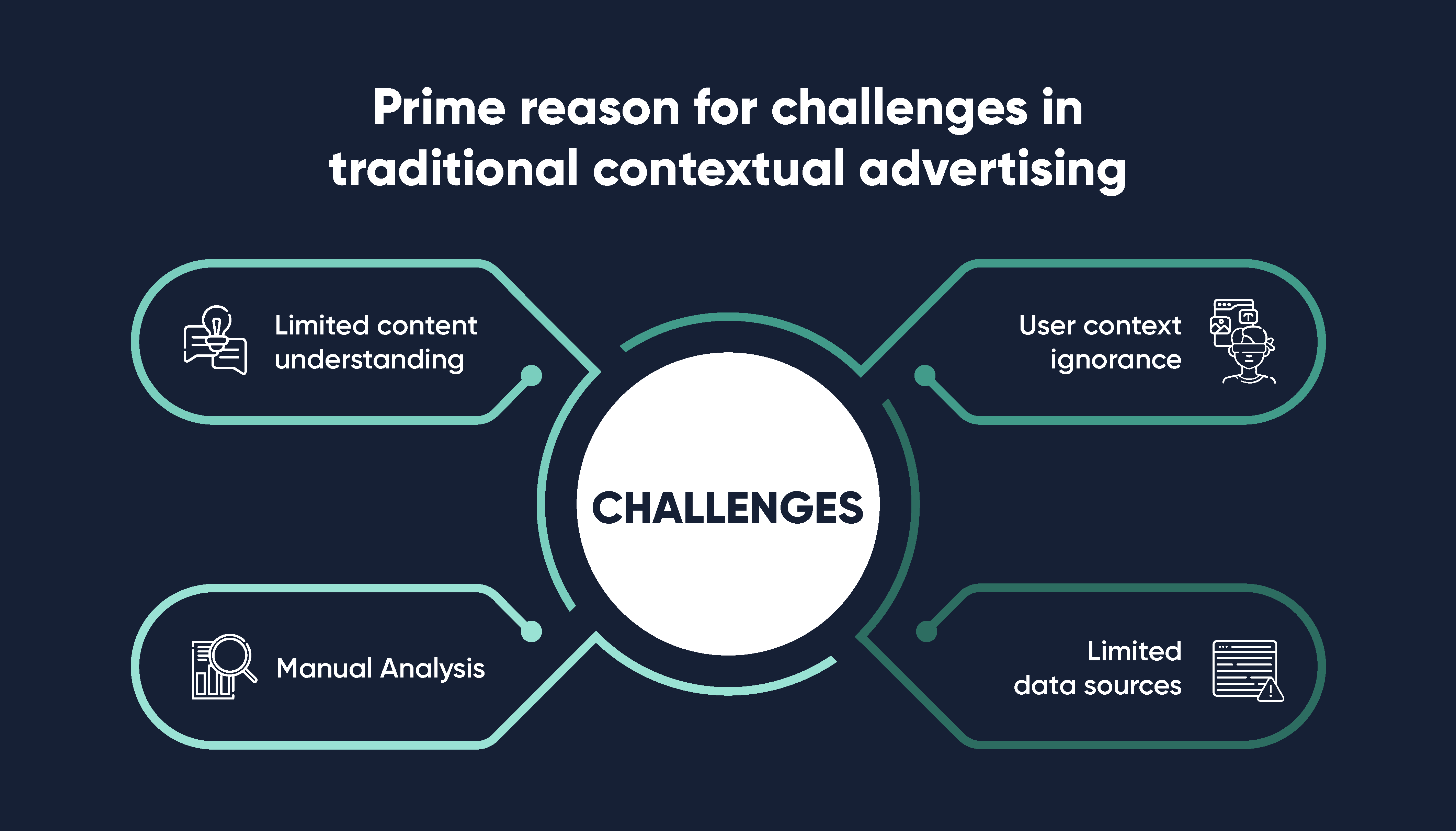
Traditional approach is relatively simple and straightforward but it lacked in reaching the consumer who would be actively interested. Other challenges that occurred with traditional contextual advertising were:
- Imprecision: The understanding of the page’s content was limited which sometimes resulted in the irrelevant ad placement.
- Reach: The reach was a significant issue with traditional approach as it lacked granular targeting and often missed the active users who would have been interested in the ad. Traditional contextual advertising often struggles to reach a sufficiently large audience due to the following factors:
- Scalability: Scalability is a major challenge in traditional contextual advertising due to the sheer volume of web pages and the need for real-time ad placement. Traditional contextual advertising relies on manual analysis of webpage content to determine its relevance for ad placement. This process is extremely time-consuming and labor-intensive, making it impractical for handling the vast amount of content that exists online.
AI-Powered Contextual Advertising: Smarter Targeting Approach in Privacy-First Era
The advent of AI-powered contextual targeting has marked a significant shift. In leveraging technology, advertisers now have the means to overcome these challenges. This innovative approach enables a more nuanced understanding of content, ensuring precise targeting, broader reach, and improved scalability, thereby revolutionizing the effectiveness of contextual advertising in the contemporary advertising landscape.
Contextual Advertising Re-engineered as Targeting Approach
The acceleration of the new generation of contextual advertising can be attributed to the evolution of machine learning and artificial intelligence (AI). In navigating the challenges posed by stringent data regulations, AI-powered contextual solutions play a pivotal role in shaping the success or failure of advertising endeavors.
Advanced contextual targeting, fueled by natural language processing (NLP), semantic analysis, and machine learning, has emerged as a game-changer. By delving deeper into content, context, and user intent, it effectively addresses issues of scalability, reach, and imprecision. The re-engineered contextual advertising paradigm prioritizes data acquisition, empowering advertisers with data-driven targeting solutions.
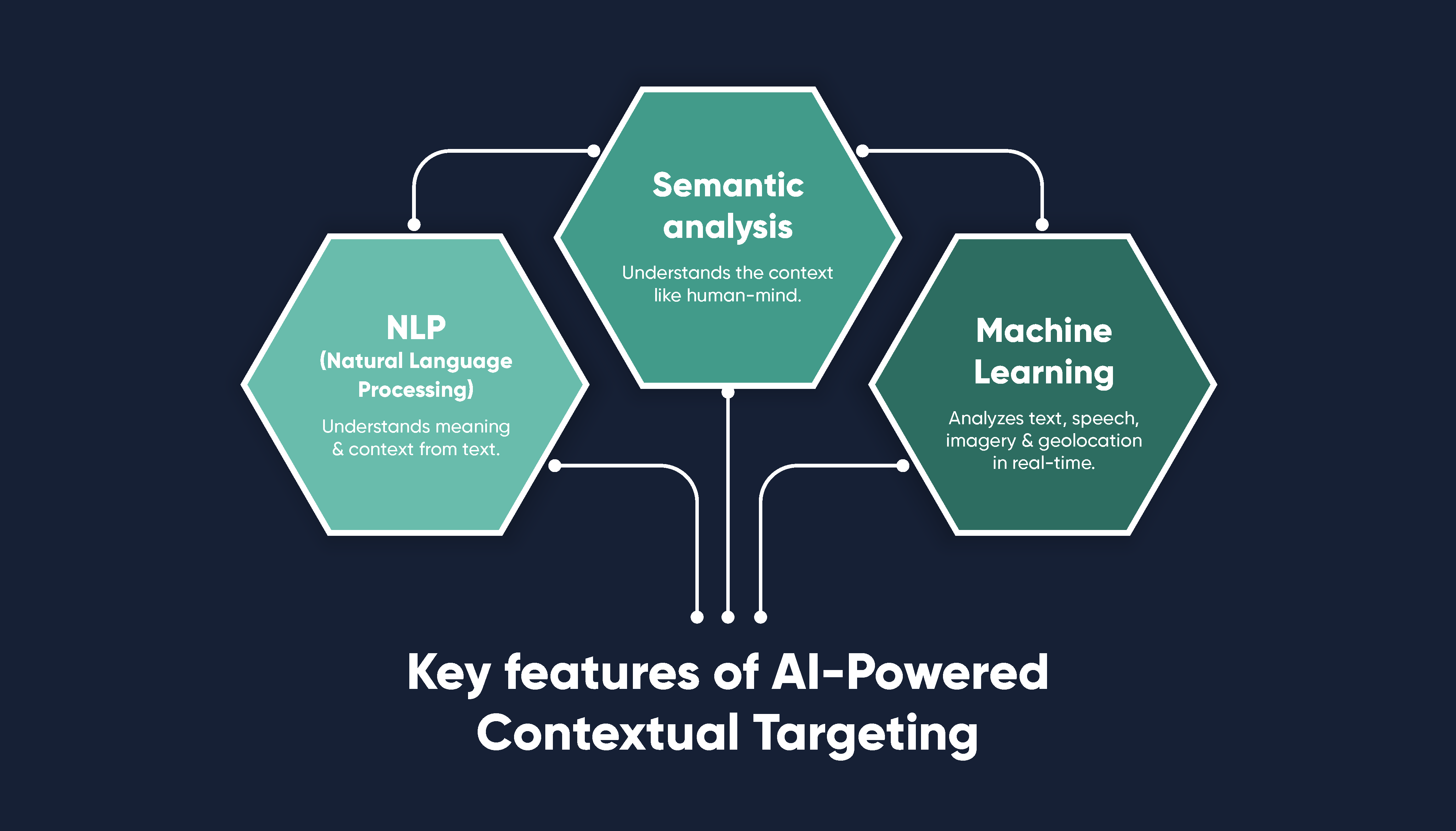
This evolution goes beyond traditional keyword targeting, employing NLP and semantic analysis to comprehend webpage content comprehensively, including text, images, and videos. Machine learning further enhances advertising opportunities by analyzing vast datasets, and predictive AI leverages existing consumer behavior data to inform targeted strategies.
Silverpush, through its advanced contextual targeting solution, Mirrors, adopts a dual approach. The AI-powered contextual solution identifies key contexts across webpages on the Openweb to extract contextual signals for advertising opportunities. Simultaneously, it conducts a thorough analysis of historical consumer behavior data, enabling predictions of audience personas and likely actions.
In a comprehensive view, Silverpush empowers advertisers to tap into previously unexplored market segments through its omnichannel contextual solution. This is achieved within a brand-safe and suitable environment, ensuring a holistic and effective advertising strategy.
Conclusion
In today’s digital world, advertisers use contextual targeting to reach specific audiences. Privacy is crucial, and transparency is key for advertisers to stand out. In the era without cookies, advanced contextual targeting is a safe and effective choice. It not only keeps users secure but also ensures brand safety. When ads are relevant to users, it greatly improves brand safety, giving advertisers a smart edge in today’s advertising landscape.

BLOGS
Partner Spotlight: Alice Ovadia, VP of Media Strategy
Silverpush is excited to highlight TRUth for our Partner Spotlight this week. We caught up with Alice Ovadia, VP of Media Strategy at TRUth, to learn more about the agency and talked to her about her big predictions for the ad market in the coming years. Here’s what Alice said. 1. ...
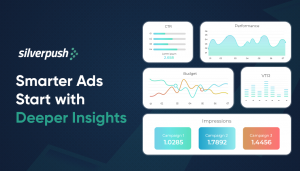
BLOGS
Why Granular Insights Are Critical for Ad Campaign Optimization
When your ad campaign ends and the dashboard lights up with a “great” VTR or a CTR that’s above average, you celebrate, right? But then comes the pause. What actually made it work? Was it the creative? The audience? The time of day? The context of the video? Most platforms ...

BLOGS
YouTube CTV Advertising: Bigger Screens, Bigger Impact
YouTube has always been a powerhouse for brands looking to connect with audiences. With over 2 billion monthly active users, it’s a platform that reaches people everywhere, on their phones, tablets, and laptops. However, the way people watch YouTube today is very different from how it used to be in the ...


